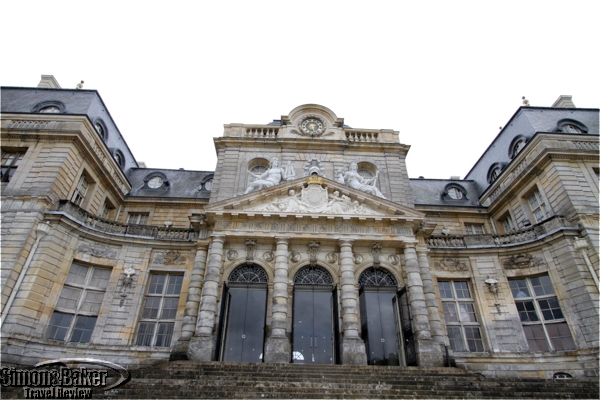
by Editor | Mar 6, 2017 | Attractions, Food, Luxury Travel, Spas
By Elena del Valle
Photos by Gary Cox
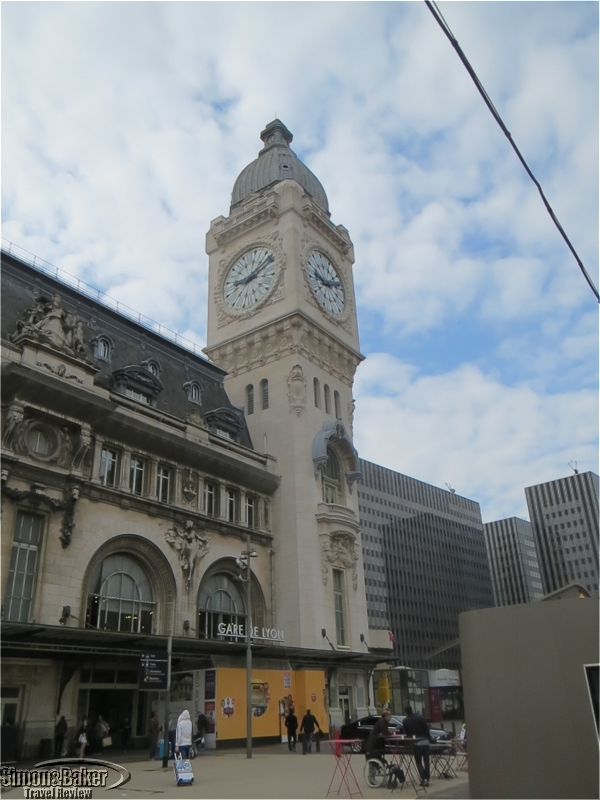
The Gare de Lyon train station in Paris
During a spring visit to Paris, France we went on an overnight side trip to the Seine-et-Marne Department (www.turisme77.co.uk and www.paris-whatelse.com) for the first time. To get there we took a train from the Gare de Lyon in the twelfth arrondissement of Paris to Melun, a city in the Seine-et-Marne. From there we made our way around by car from the train station to the area villages where, despite cold and rainy weather, we explored museums, chateaux, an artist village, a spa, and a pastry shop, spending the night at the La Demeure du Parc, a four-star boutique hotel within walking distance from the Château de Fontainebleau (Fontainebleau Castle), a museum and former royal residence.
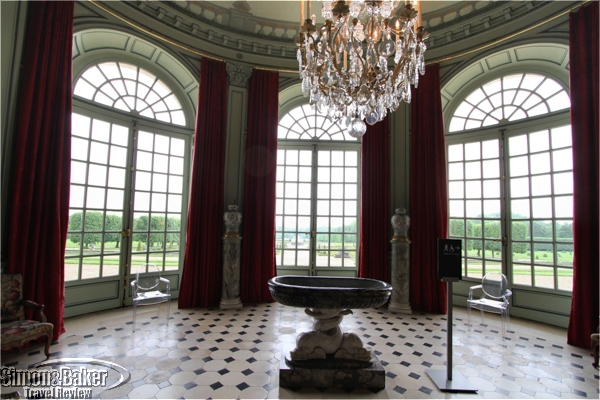
The rotunda inside the Château de Champs-sur-Marne looking out on the gardens
Our first stop was the Château de Champs-sur-Marne (see Eighteenth century home museum near Paris worth visit when in Seine-et-Marne area), a 16 room two story structure completed in 1708. Known for its rococo style and its Notable Gardens the former family home had been converted into a museum managed by the French government. After a guided tour in English of the Château de Champs-sur-Marne, we had lunch and a short guided tour in English of the Château de Vaux-le-Vicomte, a private estate open to visitors and my favorite attraction overall. Even when compared with grand former royal residences the property’s historic character, artistic harmony and beauty stood out. Before leaving and despite the ugly weather we made our way around the beautiful gardens in an abbreviated self-guided exploration.
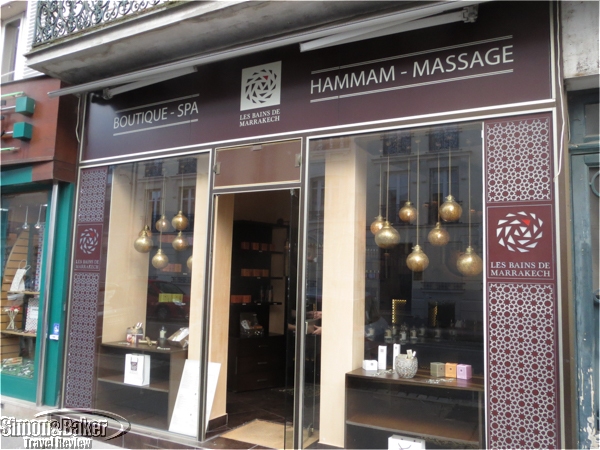
Les Bains de Marrakesh in Fontainebleau
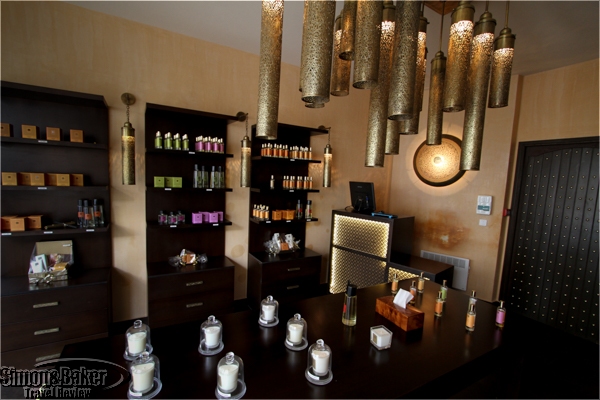
The shop at Les Bains de Marrakesh
Before checking into our hotel we had a massage at Les Bains de Marrakech (186 rue Grande, 77300 Fontainebleau, +33 09 81 13 17 21, lesbainsdemarrakech.com, fontainebleau@lesbainsdemarrakech.com). Because we arrived late our massages were cut short. Despite that the staff members were friendly and welcoming. The small facility was spotless and quiet.
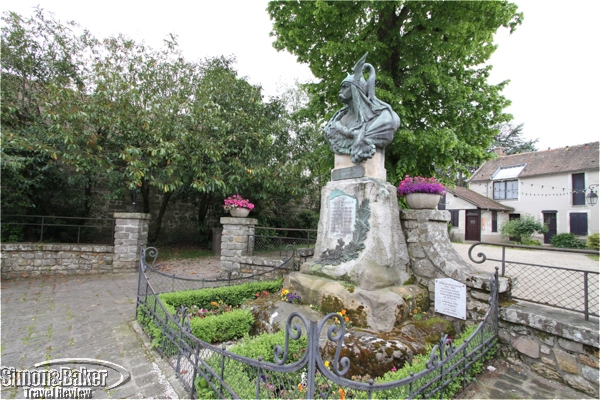
The war memorial in Barbizon
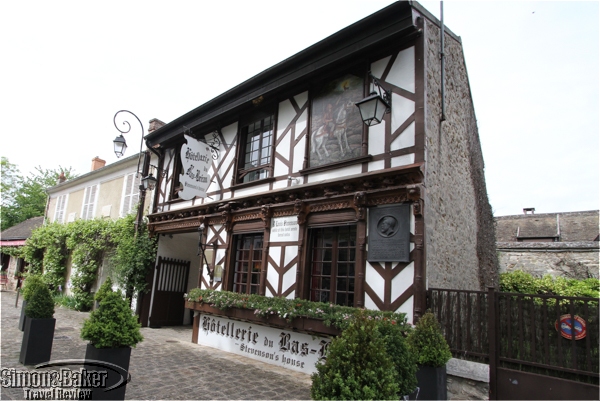
The house of Robert Louis Stevenson
Dinner (and breakfast the following morning) at our hotel was excellent. In the morning, we met Véronique Villalba, our English speaking guide in front of the Fontainebleau Castle, a former residence of the French monarchy, for an excellent tour. Following lunch, we headed to the charming artist Village of Barbizon, about seven miles northwest from Fontainebleau. We walked around with umbrellas in hand, exploring the touristy main street and admiring the pretty facades. We popped into Le Musee des Peintres de Barbizon (the Museum of Painters of Barbizon). Although it was crowded at times we enjoyed our visit thanks to our guide’s insights and engaging discussion.
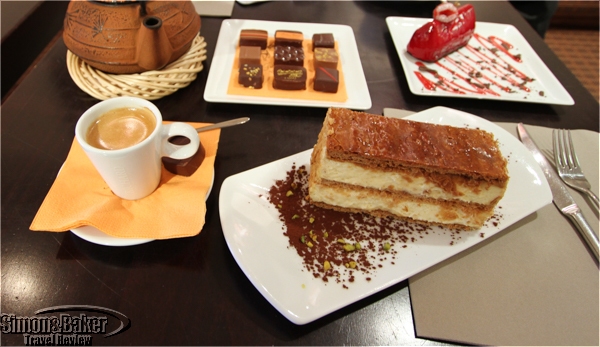
Tasty treats at Frédéric Cassel, Fontainebleau
On our way back to our hotel we stopped at Frédéric Cassel Fontainebleau (71-73, rue des Sablons, 77300 Fontainebleau, +33 01 60 71 00 64, www.fredericcassel.com), a shop in the town’s popular pedestrian shopping street for espresso, tea, chocolates, and pastries. We had a Vanilla Millefeuille and an Ilanka pastry, a worthwhile sweet ending to our pleasant visit, before our taxi drove us back to the small train station, where we boarded the crowded train back to Paris.
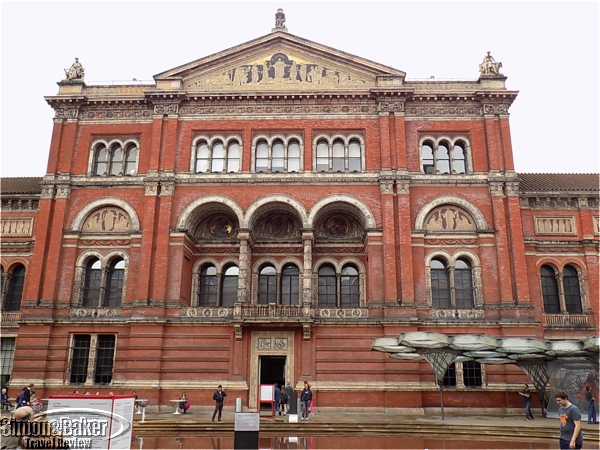
by Editor | Feb 20, 2017 | Attractions
Article and photos by Scott S. Smith

The north side of the John Madejski Garden courtyard at the Victoria and Albert Museum
In September 2016, my wife, Sandra, and I reluctantly visited the Victoria and Albert Museum, VAM, (Cromwell Road, +44 020 7942 2000, www.vam.ac.uk, contact@vam.ac.uk) in the South Kensington area of central London, United Kingdom. We were hesitant because we normally don’t care for decorative art, but Time Out London had rated it the number one attraction of a city packed with world-class destinations. We had flown in that morning and planned to go to our hotel to sleep off our jet lag before heading to the museum, which was open until 10 p.m. on Wednesdays. But our hotel was out of the way and we decided to head directly to the museum for a few hours. It had one of the world’s largest and best collections of its kind, with 4.5 million objects, only a tiny fraction of which could be displayed at one time in its 145 galleries spread over seven miles on six levels. They included ceramics and glass, textiles, furniture, sculpture, metalwork, drawings, photos, jewelry, and costumes from around the world covering 5,000 years.
It was founded in 1852, the year after the Great Exhibition, a world’s fair that showed off the fruits of the industrial age and provided the museum’s initial collection. First called the Museum of Manufactures, it was the world’s first devoted to “applied art and science,” and the official opening at the current location was overseen by Queen Victoria in 1857 (her last public appearance was in 1899 at the laying of the foundation for a new building).
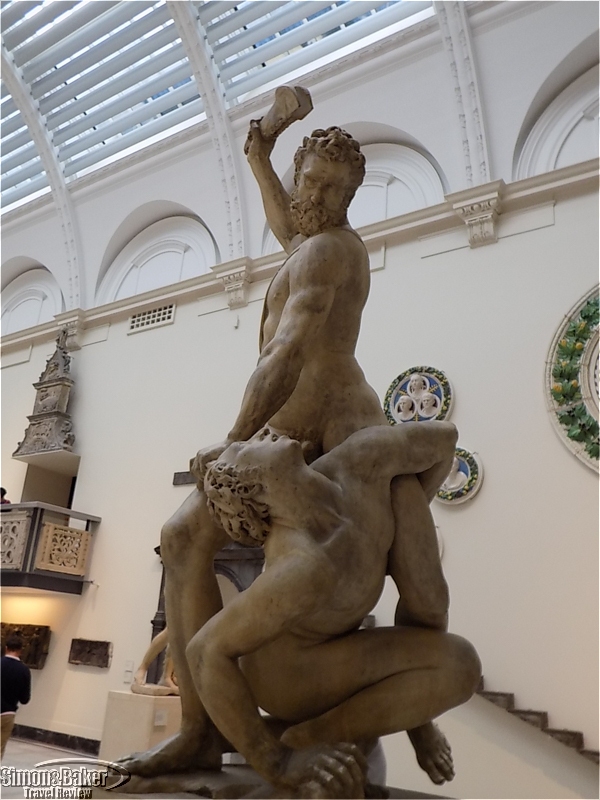
Samson Slaying a Philistine by Giovanni Bologna
Walking into the central sculpture hall on the ground floor we were greeted by the dramatic marble statue of Samson Slaying a Philistine by Giovanni Bologna (also known as Giambologna) dated about 1562. He was sculptor to the Medici dukes of Tuscany and the most important one after the death of Michelangelo in 1564, until the emergence of Gian Lorenzo Bernini in 1614. Renaissance works dominated the long room. The VAM had one of the most comprehensive sculpture collections from the post-Classic era, with 22,000 from around the world created between 400 A.D. to 1914, using materials ranging from wood to bronze.
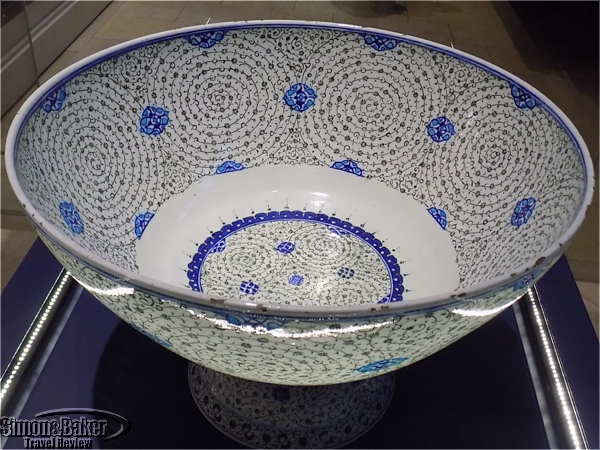
Glazed glass basin from Turkey
Islamic art was represented with 19,000 objects, one of the world’s largest collections, with works from the 7th to 20th centuries. We were particularly impressed with the rugs and tile art, with the artistry honed for nearly a millennium within the mandate of not depicting human or animal forms (except in the Persian Shiite tradition). We saw that up close on the Taj Mahal in India and in Uzbekistan, where floral and abstract forms were perfected. The VAM lighting in that area made it difficult to take photos, but we did get one of a glazed glass basin from Iznik, Turkey, 1545, with the Golden Horn design (a reference to the waterway off Istanbul). Some believe the museum’s glass and ceramics collection of 80,000 to be the most comprehensive in the world.
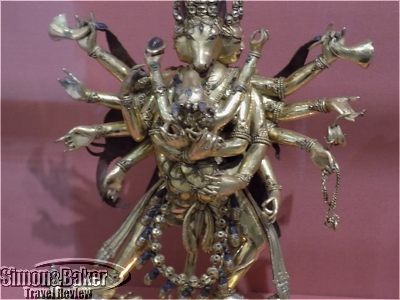
Tibetan deity representing enlightenment
With 160,000 items, the Asian collection may be the largest in the West. We only saw a small part of it, but particularly loved the exquisite gilded brass statuette of the donkey-headed, many-armed Tibetan Buddhist deity Kharamukha Samvara, a metaphor for enlightenment in the Tantric tradition of channeling sexual energy. The male aspects represented compassion, the female wisdom.
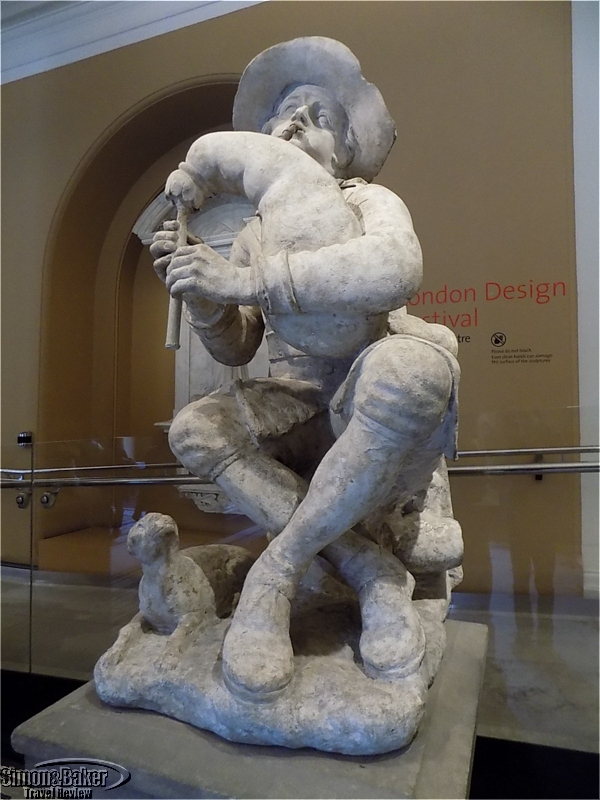
Boy with Bagpipes by Caius Cibber
We visited the room with the Raphael Cartoons, sketches for tapestries displayed in the Sistine Chapel on special occasions. By that time we were exhausted and our last photo was of the statue of a boy playing the bagpipes with his dog at his feet, sculpted from Portland stone by Danish artist Gaius Gabriel Cibber in 1680. Cibber moved to London in the 1650s, where he worked closely with the legendary architect Christopher Wren. When we return to London, the Victoria and Albert will be high on our list so that we can explore the areas we breezed through and check out those we completely neglected on photography, books, furniture, costumes, and jewelry, as well as regional exhibits on Asia and the Americas. I would recommend the VAM to friends who like art museums, regardless of whether they think they will like the focus on decorative arts.
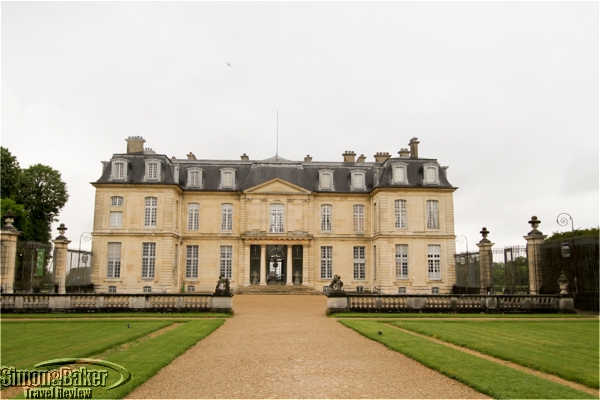
by Editor | Feb 6, 2017 | Attractions
By Elena del Valle
Photos by Gary Cox

Champs-sur-Marnes on a cloudy rainy day

A view of the Notable Gardens, inspired by Le Notre’s work, from the second floor
We liked visiting the Château de Champs-sur-Marne (31 rue de Paris 77420 Champs-sur-Marne +33160052443. www.chateau-champs-sur-marne.fr, champs@monuments-nationaux.fr) in the Seine-et-Marne Department (www.turisme77.co.uk and www.paris-whatelse.com) in the town of Champs-sur-Marne near Paris, France. A private home in the eighteenth century the property was completed in 1708. It was managed by the Centre des Monuments Nationaux, a government entity. Champs-sur-Marne is within an 85 hectare estate in the town of the same name, about 25 minutes from Paris by public transportation (RER A) and a 30 minute drive via highway A4.
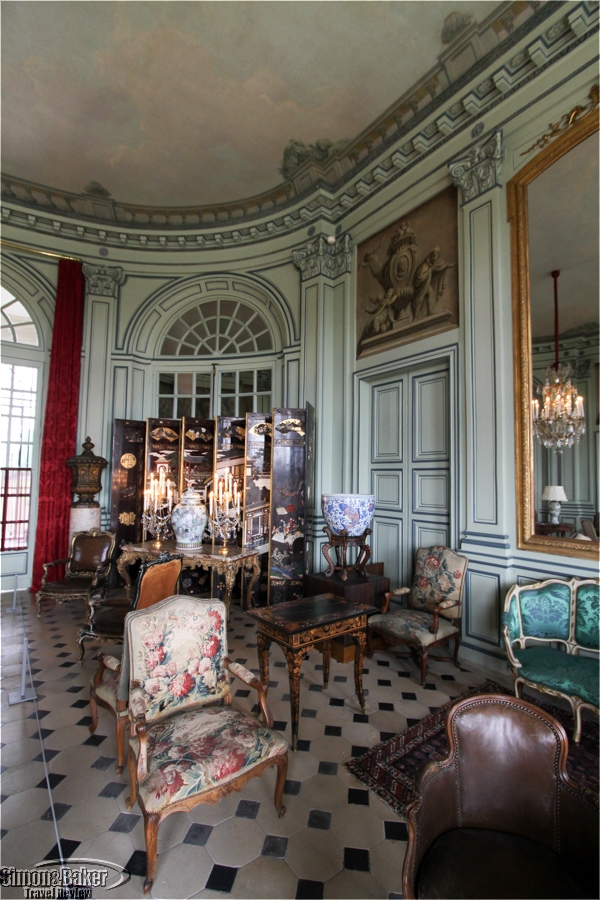
The furniture in the entry hall
The 16 room two story structure stood out for its rococo style and its Notable Gardens, inspired by Le Notre’s work and restored in 1895. Because of rainy and cold weather we missed visiting the gardens. In its heyday the Castle of Champs-sur-Marne welcomed illustrious tenants such as the princess of Conti, duke de La Vallière, and la Marquise de Pompadour. In 1895, Louis Cahen d’Anvers, a banker, bought and restored the property, and in 1935, the Cahen d’Anvers family donated the property to the state. About 1,800 square meters of the 3,600 square meter large property were open to visitors, including the second floor and basement.
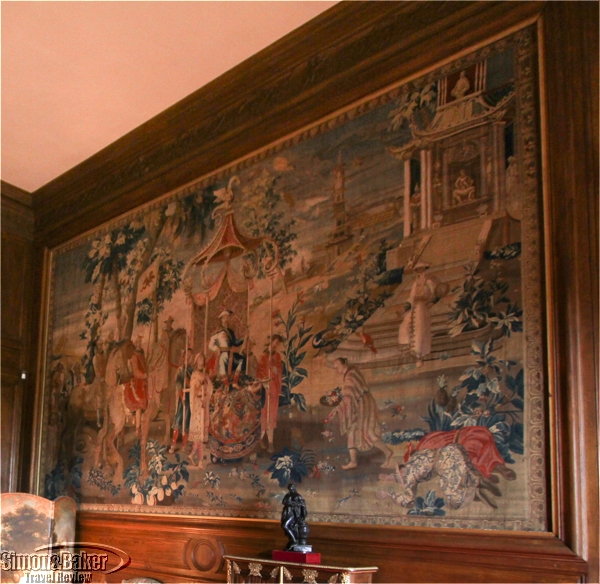
Asian style decor was popular despite a lack of accurate information about the subject matter.
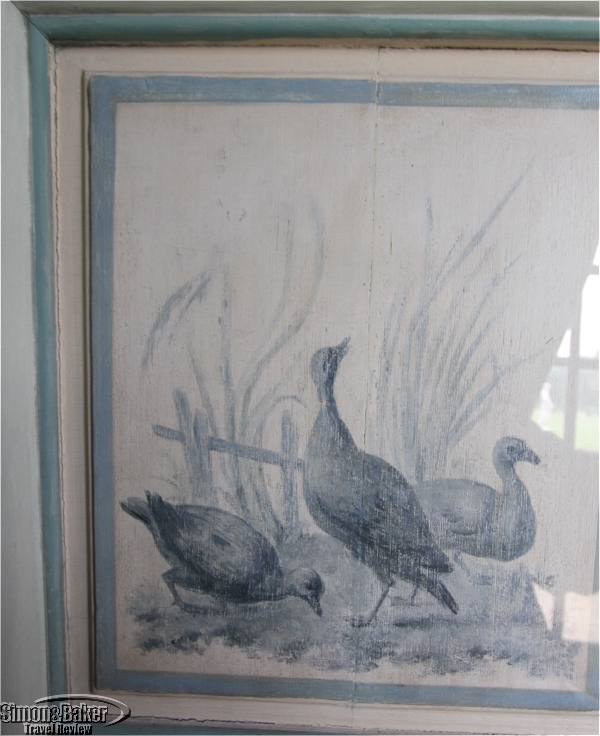
A glass covered close up where the removal of paint revealed further paintings underneath
During our visit to the Seine-et-Marne the Château de Champs-sur-Marne served as a contrast to other larger and far more pompous properties such as the Chateau de Fontainebleau, the former royal homestead, and Vaux-le-Vicomte, the famous precursor to Versailles. Like Vaux-le-Vicomte, Champs-sur-Marne served as a model for another well known property, the Elysee Palace in Paris completed in 1720. The north facade’s special feature, the rotunda, is similar to the one at the Hôtel de Matignon, the official residence of the first minister.
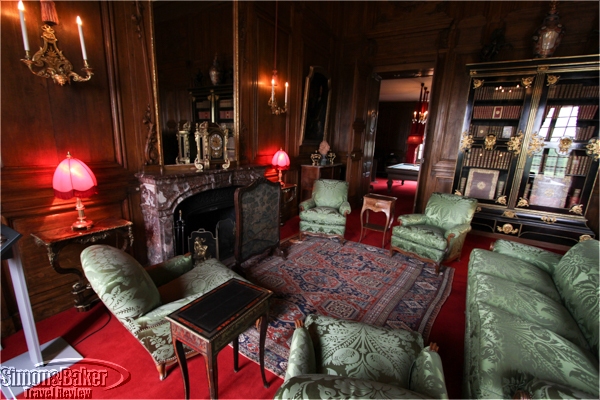
One of the rooms appeared inviting
The Château de Champs-sur-Marne was built as the home of a newly wealthy family wishing to impress society, whereas the other two area properties were designed for the public as well as private life of their affluent residents. A staff of 37 looked after the property. In 1959, President Charles de Gaulle began using it as an official residence for government guests. In 1974, the Ministry of Culture took over management of estate, allowing the public to visit the castle and its grounds. In 2006, parts of the Chinese Salon ceiling collapsed, requiring a six year long restoration. Although it was reopened in 2013 it looked like it could use additional work.

The rooms were decorated according to purpose with light colors for women or mixed groups.
If the Château de Champs-sur-Marne looked familiar, our English speaking guide explained, it was because a number of films were shot on the estate, including Dangerous Liaisons (1987) by Stephen Frears, Ridicule (1995) by Patrice Leconte, and Marie-Antoinette (2005) by Sofia Coppola.The orangery of the castle also appeared in the series Versailles (2016) by Jalil Lespert.
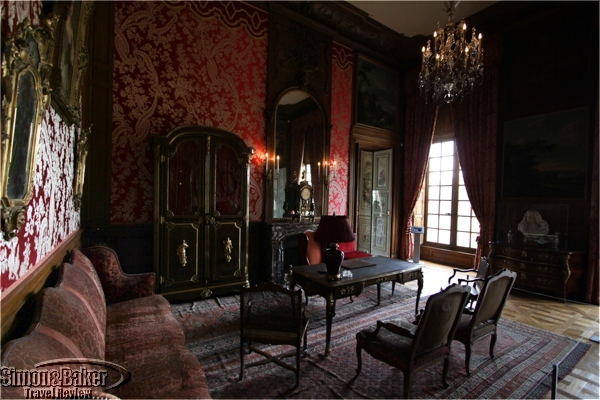
The dark rooms were offices and places for men to gather.
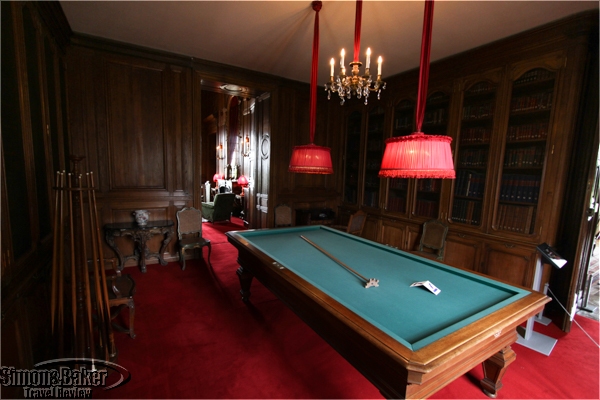
The billiards room
Our guide especially noted the chinoiseries painted decorations and the door panel (in the Cabinet Camaïeu) by Christophe Huet, among the highlights of the era. Other noteworthy features included, in the great hall, the Coromandel screen from the 18th century restored in 2016; faience pieces from the 18th century in various rooms as well as exceptional pendulums, for example, the pendulum Tête de Poupée by Jacques Auguste Thuret, clockmaker to the King Louis XIV in 1694 in La Chambre Grise; and “le Bonheur-du-jour” signed Charles Topino in the 18th century, a desk for the ladies.
by Editor | Oct 24, 2016 | Attractions, Luxury Travel
By Elena del Valle
Photos by Gary Cox
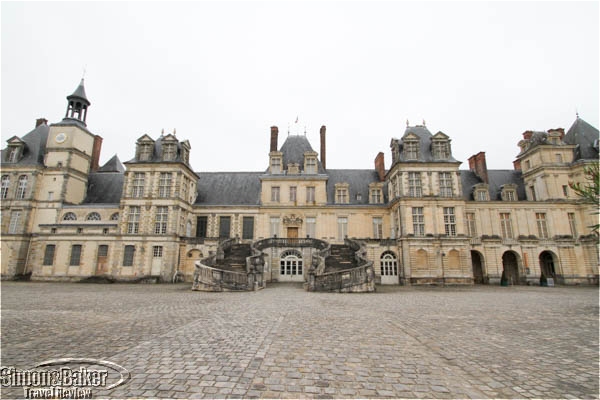
Fontainebleau Castle from the gate
During a spring trip to Paris, France we visited the nearby town of Fontainebleau, in the Seine-et-Marne Department (www.turisme77.co.uk and www.paris-whatelse.com), known for its former royal residence and forest. There was too much to see in one day so we spent the night at La Demeure du Parc, a boutique hotel established in late 2015 that was conveniently located within easy walking distance from Fontainebleau Castle.

During our tour we walked past one of the water fountains named for Diana
Since our time was short and it was our first visit to the area we took advantage of the opportunity of a guided tour in English. We met Véronique Villalba (v.villalba@laposte.net), our licensed guide, at 10 a.m. in front of the castle for Les Grands Appartements Tour, a private two-hour visit of Fontainebleau. A graduate of the University of Nanterre specializing in art history she had 10 years of experience as a guide. It was her friendly demeanor and passion for history that brought the former castle stories to life and made our morning activity memorable.
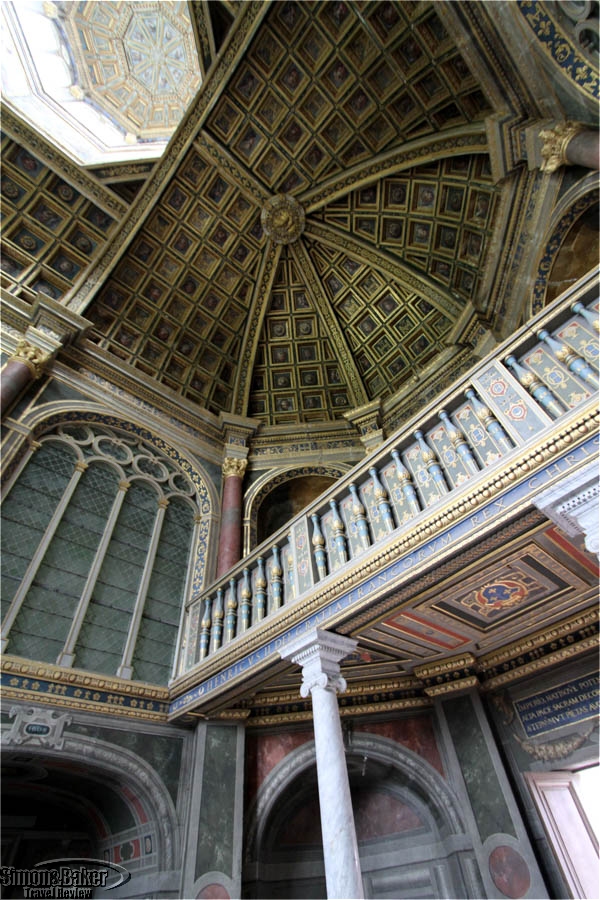
The interior design varied according to the time period of construction.
When I asked her why the historic attraction was special she explained that it was the sole castle that housed French kings for more than eight centuries (taking into account an interruption due to the Hundred Years’ War). In contrast, she explained, Versailles only served that purpose for four centuries and the Louvre had only become a royal home 650 years earlier.
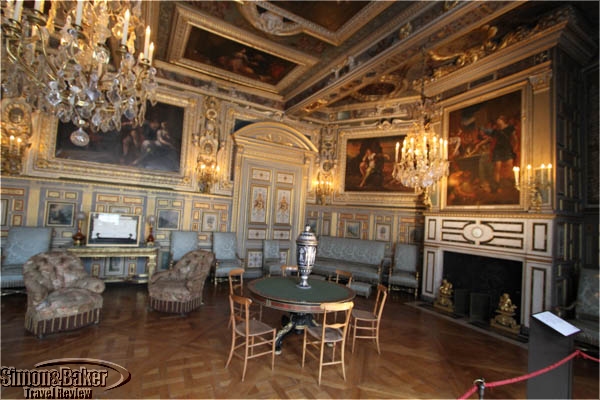
One of the characteristics worth noting was that the castle retained period furniture
Fontainebleau Castle, established circa 1137, was large. The fortified complex occupied 46,500 square meters of space in 13 floors, which included 1,536 rooms. Of those, 6,000 square meters were open to the public. It had 130 hectares of parks and gardens with 42,500 plants, and employed 135 staff. Despite the chilly and rainy weather we encountered it was by no means devoid of visitors. On the plus side, with only 470,000 visitors in 2015 it was a much more serene attraction than the Louvre or Versailles, both of which had millions of visitors a year each.
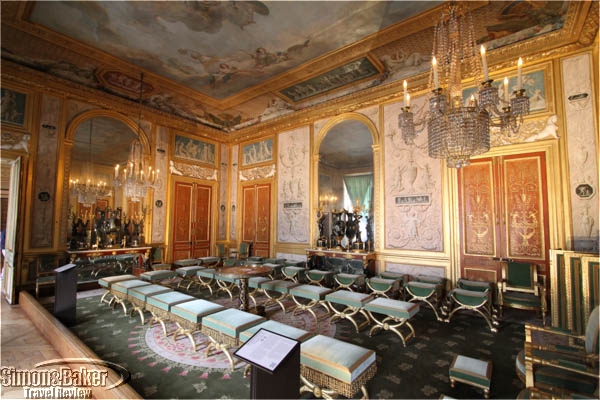
The Grand Salon de l’Imperatrice
The attraction itself was made up of a hodgepodge of buildings, improved and modified on the whims and budget strings of its powerful owners over the years. Despite our brief visit we toured interior and exterior areas. That the interior rooms were frequently furnished with original pieces, she explained, lent the castle a notable ambiance absent in other castles and palaces where the furniture and art had been sold years earlier.
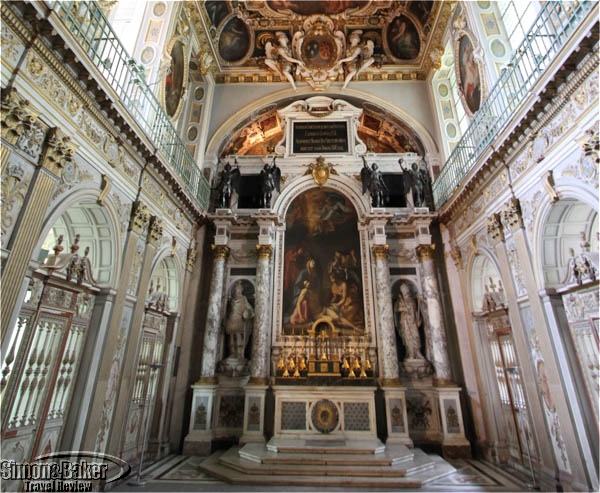
The Chapelle de la Trinité
We visited the Royal apartments, Renaissance Rooms, one of Marie Antoinette’s Boudoirs, Francis I Gallery, Galerie de Diane, Chapel of the Trinity, Chapelle basse Saint-Saturnin (only the upper level). We saw many of the masterpieces: The Duke of Orléans Commemorative Wedding Cabinet, Charlemagne in the Guise of Henry IV (in the Chapelle de la Trinité), The Royal Elephant (in the Galerie François Ier), Alexander Taming Bucephalus (in the Galerie François Ier), Odyssey Cabinet (in the Ancienne Chambre de la Reine), Beneman Commode (in la Nouvelle Chambre de la Reine), Marie Antoinette’s Bed, Napoleon’s Throne. Outside we walked through or caught a glimpse of its gardens and courtyards (sometimes from a distance): Cour Ovale, Cour de la Fontaine Cour d’Honneur, Cour des Offices, Grand Parterre (created by André Le Nôtre and Louis Le Vau and said to be Louis XIV’s greatest architectural achievement at Fontainebleau), Jardin Anglais, Jardin de Diane, Grotte des Pins, Pavillion de l’Étang, and Park. Should I return to Fontainebleau I would enjoy another visit to the castle, especially in the company of Véronique Villalba, for further discovery and leisurely exploration, including time in its gardens if the weather is clear.
by Editor | Sep 12, 2016 | Attractions, Luxury Travel, Restaurants
By Elena del Valle
Photos by Gary Cox
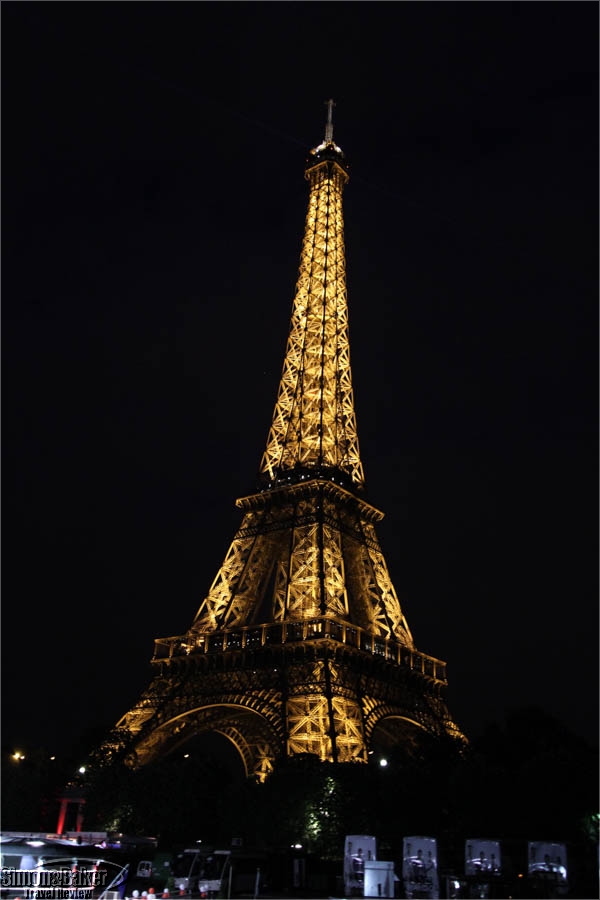
Our view of the Eiffel Tower as we cruised by on the Seine River
Often friends and acquaintances, knowing my fondness for Paris, France ask for dining recommendations. It is a question I never take lightly, especially for first time visitors. One of my top recommendations is Le Jules Verne in the middle of the world famous Eiffel Tower because of the romantic setting, gourmet offerings and spectacular views of the city. It is the type of setting that memories that last decades are made of and the perfect place for special occasions.
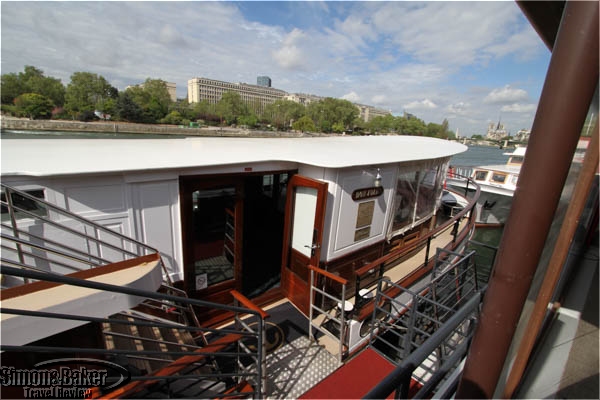
The boarding area of the yacht Don Juan II
On my most recent visit, I discovered another completely different yet equally romantic, elegant, and memorable venue, the Yachts de Paris Don Juan II (Port Henri IV, 75004 Paris, France, +33 1 44 54 14 71, http://donjuan2.yachtsdeparis.fr/ , reservations.dj2@ydp.fr ), a 50 meter long by 7 meter wide yacht. Aboard the vessel, which could seat 38 guests (far fewer than the famous iconic tower), five staff served an appetizing set menu made from fresh ingredients while the boat cruised 26 kilometers along the Seine River past the Eiffel Tower and back to its departure dock, a stone’s throw away from the Ile Saint Louis in the heart of the city. There were only 12 of us that night, which made the experience ever more intimate and special.
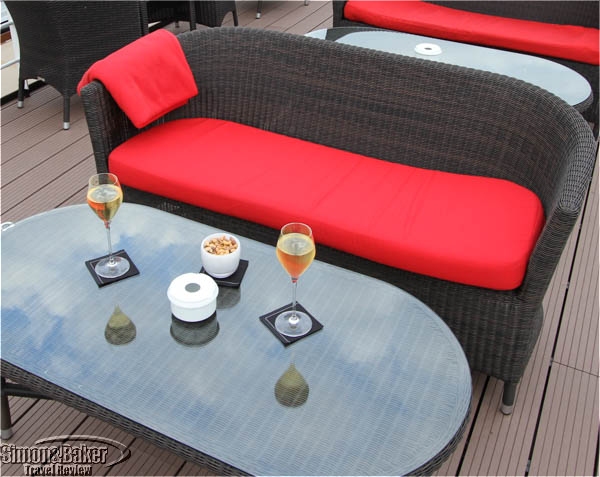
Before our departure we sat on at a comfortable spot on deck to enjoy views of Notre Dame while sipping a bubbly aperitif
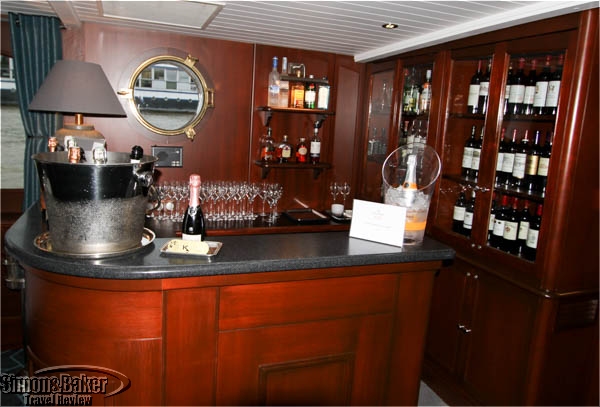
Below deck the bar was stocked with several types of champagne
Despite our early arrival we received a warm welcome by the English speaking staff. We were immediately invited to board. Black rattan furniture with red cushions was spread around the open space atop the Don Juan II. Below deck pretty tables were set and awaiting our arrival. The elegant tableware was designed by Safran and the furnishings were by Pierre Frey. The single stall head was spotless. After a quick tour one of the staff invited us to have an aperitif topside while we waited for the rest of the passengers to arrive.
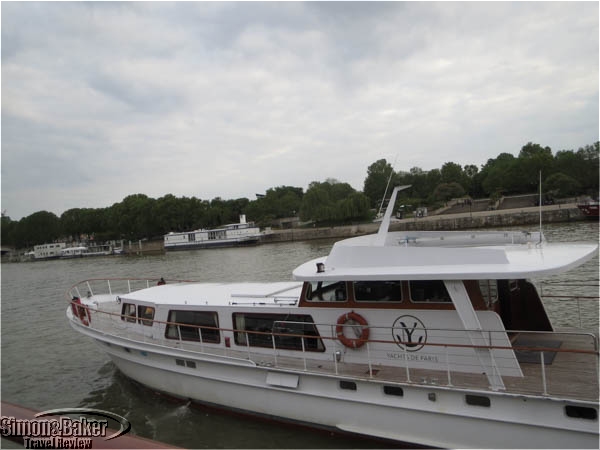
Another Yacht de Paris vessel passed just as we pulled out onto the river
Moments later, we were sipping chilled champagne and munching on mixed nuts (pistachios, cashews, pecans, walnuts and Brazil nuts) and enjoying views of Notre Dame Cathedral, the Institute du Monde Arab, and the Left Bank as the rest of the guests began to arrive. Francois, an attentive staff member, offered me a synthetic fiber red blanket to ward against the night chill. He brought us bite size morsels of salmon with beetroot, tomato and radish. Greg, the cruise photographer, introduced himself and with our permission took some photos. When it was departure time our server invited us below deck. We headed to our window side table for dinner.

The aft view of the river
From the Port Henri IV we motored past the Ile Saint Louis and Ile de la Cite islands passing many historic buildings such as the Conciergerie, Musee du Louvre, Grand Palais, small Statue of Liberty, Eiffel Tower (at the top of the hour to see the twinkling lights), the Musee d’Orsay and finally Notre Dame Cathedral. The Don Juan II glided gently along the river most of the way, so that but for the passing scenery and the occasional wake from a fast moving boat we might have forgotten we were on the water.
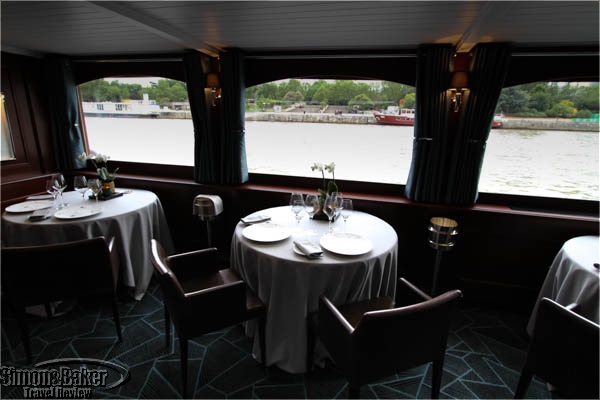
We had an outstanding view thanks to the yacht’s large windows
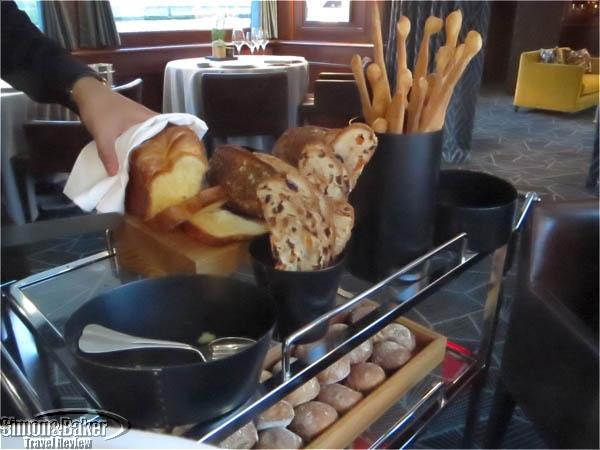
The bread cart was one of several luxury features of the dinner service.
Our five course set menu dinner began with a pre-starter of Crab, white radish pickles, chips and crisps. There were two types of butter, salted and seaweed flavored. A server came by our table to offer us bread from a cart: country, fruit and nut, Italian bread sticks, brioche. Whenever our bread plate was empty she would return to refresh it with our selections. Lobster with fresh greens and creamy nage was next. The main course was Suckling Lamb, roasted and cooked with bay leaf, organic asparagus from the Landes with juice and Parmesano di Reggiano cheese. A Saint-Nectaire cheese course followed. For dessert we had Flower of flowers, lime and strawberry cremeux and juice of an infused hibiscus. Chocolate bites, presented in individual boxes for us to keep, completed the repast. Our meal was paired with a 2012 Louis Jadot chardonnay from Burgundy. We appreciated the souvenir printout of our menus. It included a map of our path along the Seine.
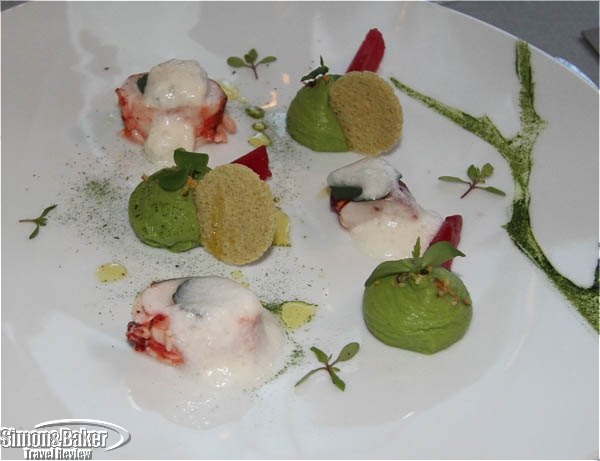
The art like pre-starter featured bites of crab
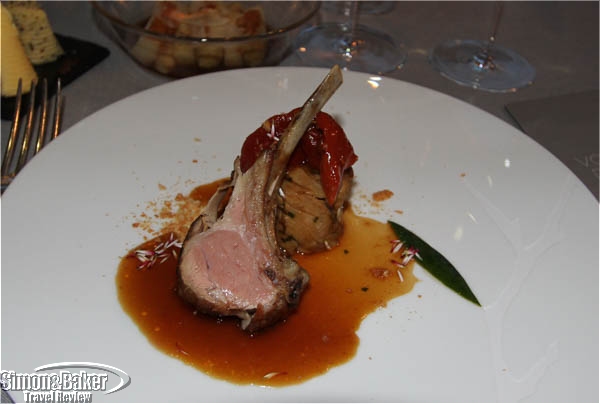
The suckling lamb
The photographer took our photos with iconic buildings in the background such as Notre Dame while we were docked and later the Eiffel Tower when we went topside to enjoy the light show during the cruise. At the conclusion of the cruise the photos were available for purchase. Our two favorite photos became a lovely keepsake that enhances our wonderful memories of the evening.
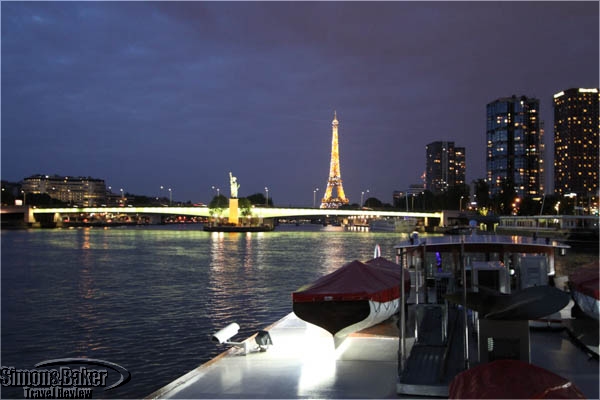
Among the sightseeing highlights were the Pont de Grenelle replica of the Stature of Liberty and the Eiffel Tower
The restaurant, opened March 2003 and managed by François Giroud, was one of eight small vessels owned by Yachts de Paris. The meals were created by Guy Krenzer, executive chef, who was recipient of the recognition Double Meilleur Ouvrier de France and creative director of well known Lenôtre culinary enterprise. The wine and food pairings were selected by Olivier Poussier, recipient of the Meilleur Sommelier du Monde 2000 award.
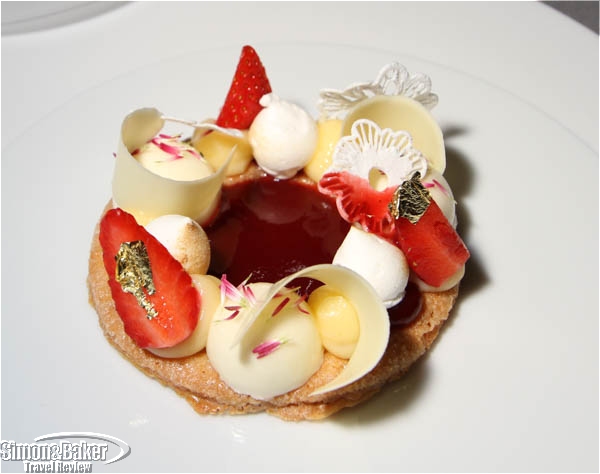
The colorful dessert of Flower of flowers, lime and strawberry cremeux and juice of an infused hibiscus
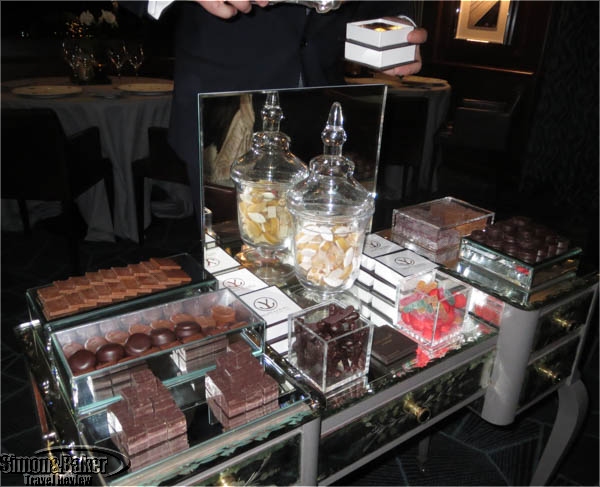
A cart of sweets to wrap up the meal
In addition to the well presented gourmet dinner we enjoyed and the exacting service, there were a myriad luxury touches, such as the blankets, cloth napkins with our amouse bouche, the orchid on our table, artistic dinnerware like the sea urchin shaped appetizer plates, quality nut snacks, perfectly timed courses to allow us to profit from the best views, and friendly and professional staff who kept us informed during the brief journey, that made the evening special. I would gladly take another cruise aboard the Don Juan II and recommend it to friends living or visiting Paris to celebrate a special occasion or just because.
by Editor | Aug 22, 2016 | Attractions, Luxury Travel
By Elena del Valle
Photos by Gary Cox
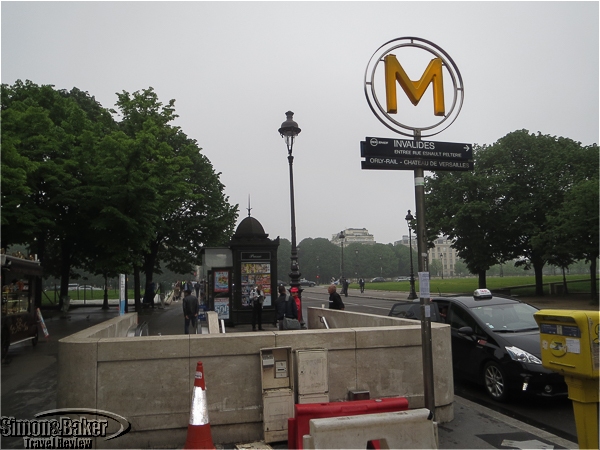
Our meeting place for the tour was the entrance of Les Invalides metro stop in Paris
Over the years I have visited Versailles, the famous palace established by Louis XIV near Paris, France, several times on my own and with large group tours. While the attraction itself was impressive the crowds were oppressive and the logistics to visit it cumbersome. On my most recent stay in the City of Lights, I tried a new approach. I placed myself in the hands of an organized small group program that started and ended in Paris. When I visited Versailles in the past I had to make my own way there from Paris. This time all I had to do was reach the meeting point in central Paris in the morning, and make my own lunch arrangements. The tour company took care of the rest. At the conclusion of the tour our small group returned to Paris together. I was pleased with the results. I appreciated and enjoyed my visit to the 787 hectare palatial estate much more than on most of my previous visits, and was able to discover areas open only to small escorted groups such as ours.
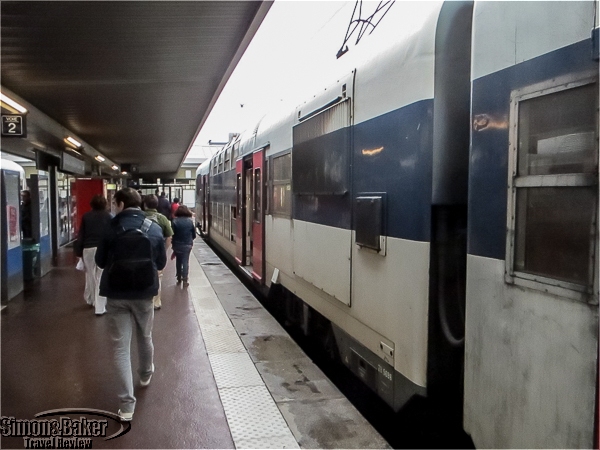
At the train station in Versaiilles
We met Herve Rudrauf, our English speaking French tour guide, by the entrance to Les Invalides RER train station in the tony seventh arrondissement near the heart of the city early morning on a spring Friday. It was pleasantly chilly. The sky was gray and overcast, threatening rain. We were thrilled to discover there were only four of us in the daylong (eight and a half hours) tour. The other two participants in the Full Day Versailles VIP Behind Locked Doors program, organized by City Wonders Tours (6-9 Trinity Street, Dublin, 1-800-358-1942, www.citywonders.com, Info@citywonders.com) were from the United States.
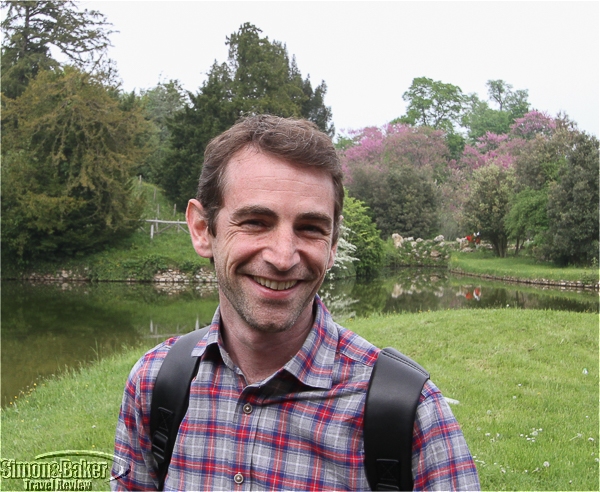
Herve Rudrauf, our tour guide, in the palace gardens
Following greetings, introductions, and instructions Herve handed each of us an RER train ticket and we descended the stairs to the station platform. A few minutes later, we boarded a crowded two level suburban train. It was necessary for our group to split up in order to find seats. Once at the Versailles train station, we found each other and walked together to the palace entrance where, thanks to our tour, we skipped the long admission line. We also had special access to select rooms, such as Marie Antoinette’s private theater, open only to escorted visitors. A staff person provided our group exclusive access.
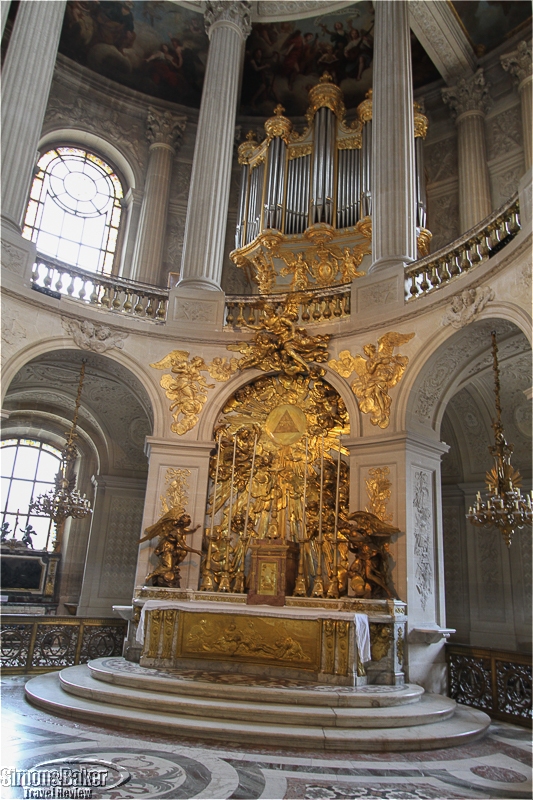
The Royal Chapel at Versailles
Despite the expedited entry and private visit, the interior of the palace was overcrowded with tourists, sometimes making it challenging for our small group to remain together, hear our guide, take photos and walk from one room to another without being separated. That was not surprising given that some 7.5 million people visit the opulent former royal residence each year, according to a Versailles spokesperson. Although the interior was 63,154 square meters large and the attraction employed as many as 1,000 staff, only 23,072 square meters of the former palace were open to the public, and some of those rooms and halls could only be visited with a guide. A representative from City Wonders indicated that as much as 70 percent of the palace interiors may be visited via an escorted tour.
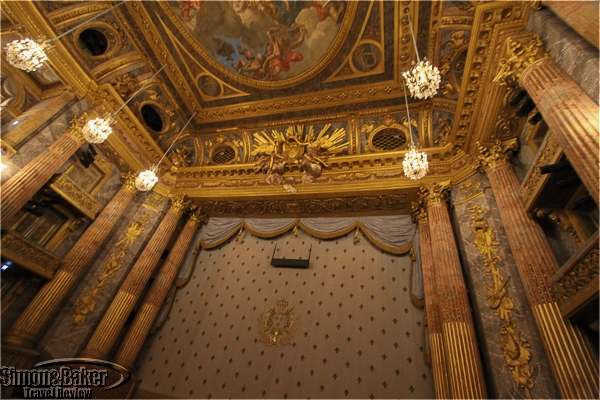
Our private visit of the Royal Opera was memorable.
Because of the uncertain and overcast weather it was a relatively quiet day, our guide explained to our surprise when we commented on the number of people all around us. As we made our way within the storied interior the cacophony of noises competed for our attention. Our eyes and imagination wondered. It was easy to become distracted. Thankfully Herve was efficient at keeping a speedy yet comfortable pace (although restroom breaks were limited and there was no time for the gift shop) while at the same time sharing engrossing information about the former royal residence and its famous occupants.
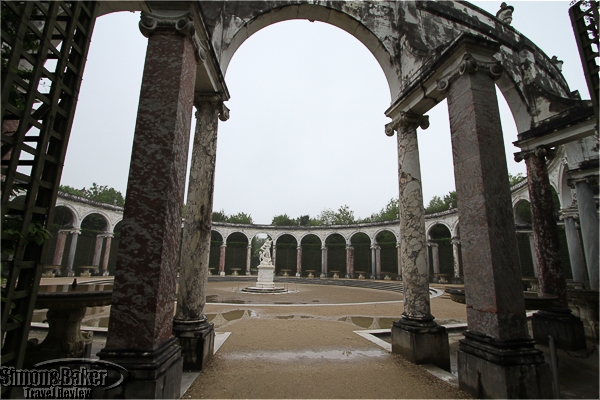
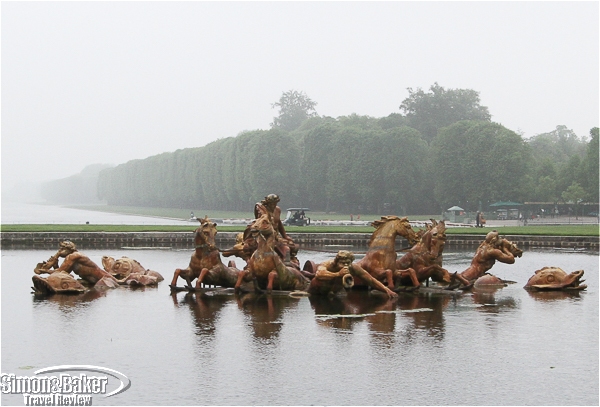
The palace gardens did not look their best because it was cloudy and rainy.
Anticipating a two hour break for lunch we had made reservations in advance at a gourmet restaurant in the village of Versailles. Unfortunately, by midday we were in the heart of the estate and too far away to return to the village for lunch so we begrudgingly cancelled our booking. Instead we made our way to one of the crowded restaurants within the property. While the service was speedy and efficient lunch was the most disappointing meal we had during that month long trip. We were so hungry after leaving the restaurant we attempted to buy something else at the nearby cafe only to find a slow moving long line and a limited selection of fast food items that appeared no better than what we had already sampled at the restaurant.
Part of what made the tour worthwhile, in addition to our tour guide’s knowledge and enthusiasm, was the access our small group had to areas of the former palace reserved for escorted tours such as ours. Despite huge crowds we had a chance to step behind the cordon at the Royal Chapel for a brief look. We had private visits of the Royal Opera in the main building and the Queen’s Theater in Le Petit Trianon, among of my favorite sections.
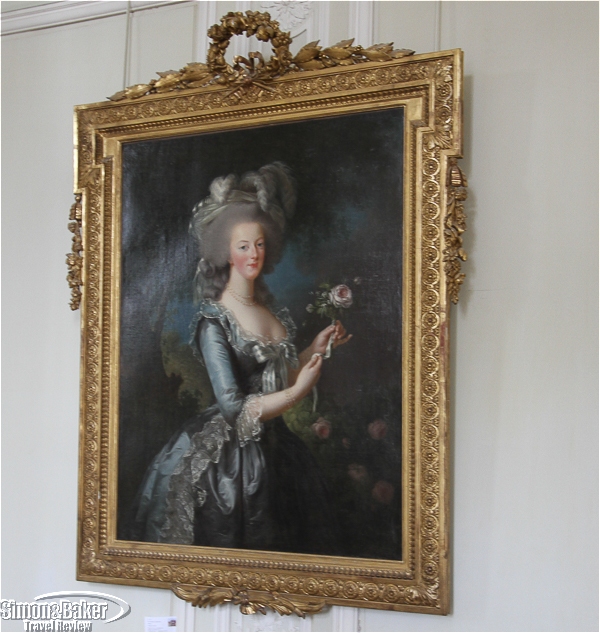
A painting of Marie Antoinette at Le Petit Trianon
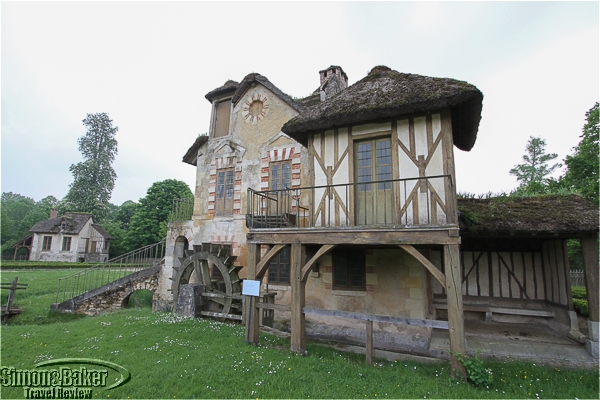
One of the houses in the Hamlet, part of the Versailles estate
After lunch we walked around the gardens, discovering a hidden grotto where the famous queen was said to spend quiet time alone. We also visited Le Petit Trianon, Marie Antoinette’s home away from home while at Versailles; and ambled around the Hamlet, a make believe village within the estate.
Perhaps because before studying to become a licensed tour guide Herve spent several years working as an actor his discussions about life at Versailles were engrossing and entertaining. His interest and passion about French history (he wrote his thesis on the representation of royal power in France), the royal families, and the intriguing stories of inhabitants of the former royal palace were contagious. By the end of the tour, our fellow travelers were asking him for recommendations of books about the history of Versailles and its previous inhabitants.
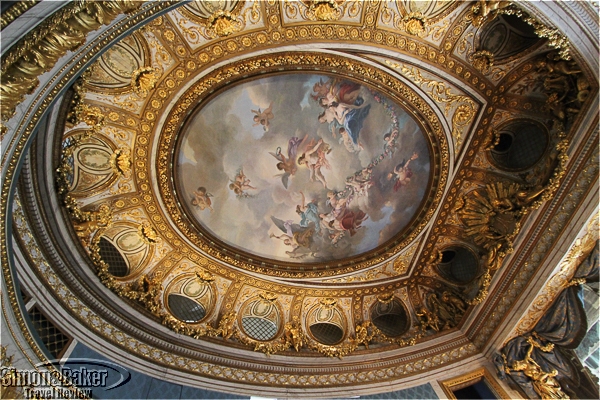
The ceiling of the Queen’s Theater at Le Petit Trianon
At the conclusion of the Versailles portion of the tour, a taxi, slightly delayed due to strikes, dropped us off at the Versailles train station where we boarded an RER return train to the city. City Wonders Tours, owned by Simone Gozzi, offered the Full Day Versailles VIP Behind Locked Doors tour Fridays and Saturdays only for a maximum of 15 people. The company won the award for the best Guides and Products in Paris 2016 from Get Your Guide. The highlight of the tour was Herve, our friendly, knowledgeable and enthusiastic tour guide who brought the history of Versailles alive. We especially liked the well orchestrated tour logistics, intimate size of our group, and access to private areas. In the future we would be well inclined to book another tour with the same company and the same guide.



























































